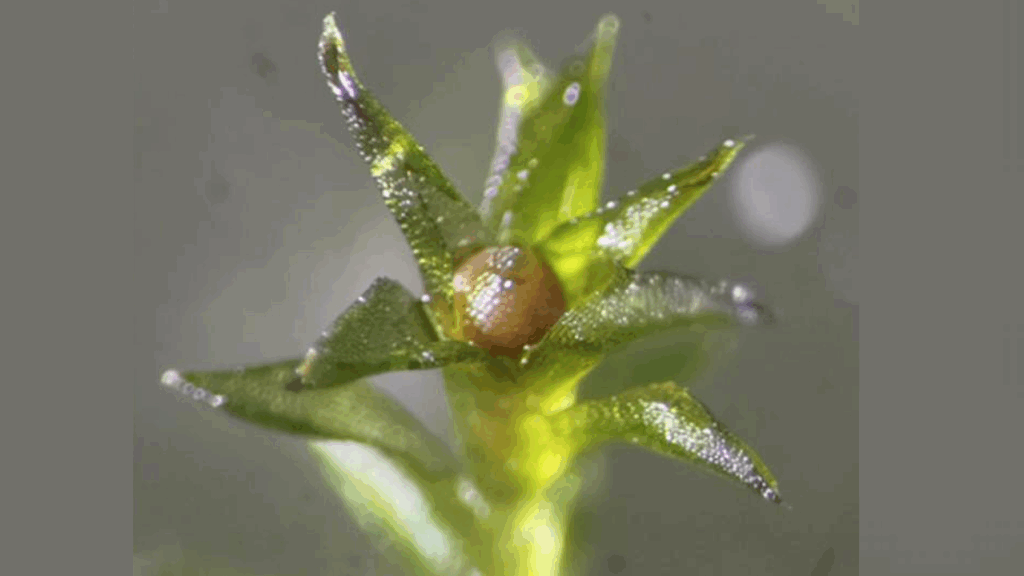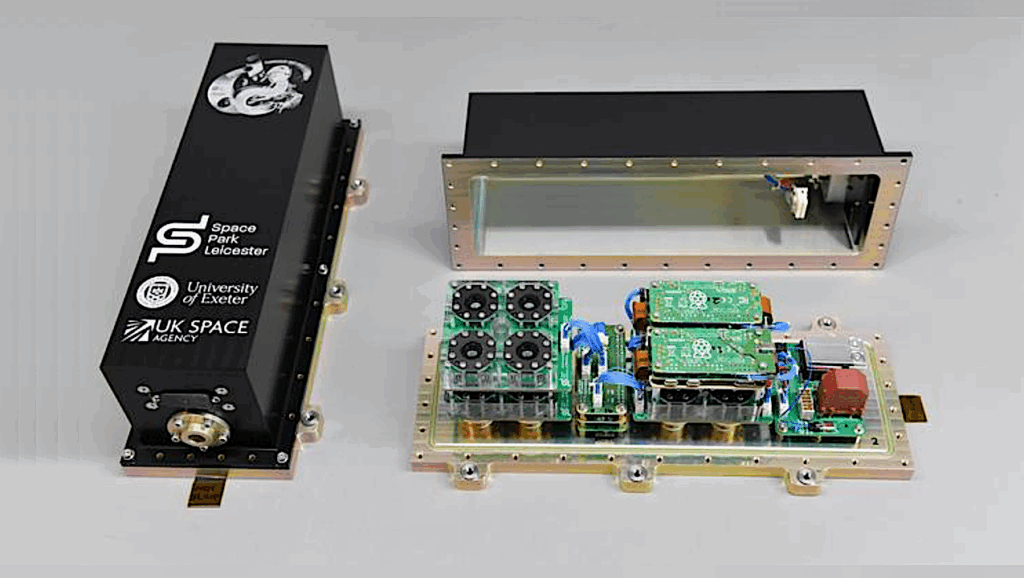NASA Spaceline Current Awareness List #1,176 28 November 2025 (Space Life Science Research Results)

JAXA astronaut and Expedition 73 Flight Engineer Kimiya Yui shows off production bags containing bioengineered yeasts and probiotic cultures for the BioNutrients-3 investigation. — iss073e0818445 (Oct. 2, 2025) – larger image
The abstract in PubMed or at the publisher’s site is linked when available and will open in a new window.
Papers deriving from NASA support:
- Carter KJ, Ferguson CR, O’Grady CS, Poczatek MJ, Chen X, Young M, Huang AS, Laurie SS, Macias BR. Prediction of optic discPrediction of optic disc edema progression during spaceflight.JAMA Ophthalmol. 2025 Nov 20.Note: ISS results.
Journal Impact Factor: 9.2
Funding: S.S. Laurie and B. Macias are affiliated with NASA Johnson Space Center. - Brawley HN, Juarez I, Kurouski D, Zwart SR, Smith SM.Feasibility of portable Raman SERS for blood biomarker monitoring in spaceflight conditions.Life Sci Space Res. 2025 Nov 27. Online ahead of print.Note: From the abstract: “This study represents a ground-based preliminary investigation into the use of SERS in combination with portable Raman spectroscopy for in situ blood biomarker detection. We aimed to assess whether signal enhancement could be achieved using the Agilent Vaya™ Raman spectrometer with AuNPs, under minimal sample processing conditions.”
Journal Impact Factor: 2.8
Funding: “We thank the volunteers who participated in this study for their time and effort in the success of this project. Additionally, we thank and recognize Mark Mabry of Agilent Technologies for the provided instrumentation training and assistance in method development. Lastly, we extend our gratitude to the National Aeronautics and Space Administration (NASA) Johnson Space Center’s Center of Innovation Funding for financial support.” - Casey TJ, Kubik AJ, Allen NG, Zilberman AH, Whitman BM, Hunt JC, Juran CM, French J, Blaber EA.Targeting serotonin pathways for astronaut safety and performance.Aerosp Med Hum Perform. 2025 Nov 1;96(11):969-75.Note: Hindlimb unloading study.
Journal Impact Factor: 0.900
Funding: C.M. Juran is affiliated with NASA Ames Research Center. - Ferraro S, Ghani F, Tosi M, Dave A, Verduci E, Mauri A, Zuccotti G, Mason CE, Marcovina S.Children’s health: Insights from space medicine on metabolic health.npj Microgravity. 2025 Nov 20;11:81.PI: C.E. MasonNote: This article may be obtained online without charge.
Journal Impact Factor: 5.1
Funding: PI reports NASA funding. - Fountain LL, Gilliham M, Amitrano C, Arouna N, Barker RJ, Böhmer M, Braun M, Brereton NJB, Brocato RL, Bunchek JM, Canaday ELJ, Caplin N, Castaño P, Chamberlain C, Decourteix M, Del Bianco M, De Micco V, Doherty CJ, Franke MF, Fuentes S, Gilroy S, Harrison L, Hasenstein KH, Hauslage J, Herranz R, Iyer-Pascuzzi A, Izuma DS, Junya K, Kiss JZ, Legué V, Lloyd JPB, Maffei ME, Massa GD, Meyers AD, Perera IY, Poulet L, Roychoudry S, Sena G, Shippen DE, Stoochnoff J, Takahashi H, Wyatt SE, Blancaflor EB.Expanding frontiers: Harnessing plant biology for space exploration and planetary sustainability.New Phytol. 2025 Nov 26. Online ahead of print.PIs: C.J. Doherty, S. Gilroy, K.H. Hasenstein, A. Iyer-Pascuzzi, I.Y. Perera, D.E. Shippen, S.E. WyattNote: This article may be obtained online without charge.
Journal Impact Factor: 8.1
Funding: “This paper was supported through facilitation of an in-person workshop at ELGRA’s Biennial Symposium in Liverpool, UK 2024. The authors thank ELGRA and its 2024 management committee (led by President Phil Carvil) for integrating the ISLSWG Workshop as well as representatives of the host city, Liverpool, and conference sponsors, including ESA, UKSA, and the Science and Technology Facilities Council (STFC; part of UK Research and Innovation). Partial stipends for delegate attendance were also provided by NASA, ESA, ASI, JAXA, CNES, DLR, CSA, P4S, and the European Research Council (ERC). LLF was supported by an appointment to the NASA Postdoctoral Program at the Kennedy Space Center, administered by Oak Ridge Associated Universities under contract with NASA.” - Kumar S, Kumar K, Angdisen J, Suman S, Kallakury BVS, Fornace AJ Jr.cGAS/STING pathway mediates accelerated intestinal cell senescence and SASP after GCR exposure in mice.Cells. 2025 Nov 11;14(22):1767.PI: A.J. Fornace Jr.Note: This article is part of section “Cellular Aging” (https://www.mdpi.com/journal/cells/sections/cellular-aging) and may be obtained online without charge.
Journal Impact Factor: 5.2
Funding: “This study was supported in part by the National Aeronautics and Space Administration (NASA) through Grant Numbers 80NSSC22K1279 and NNX15AI21G. The authors also acknowledge the Lombardi Comprehensive Cancer Center Shared Resources, which are supported in part by Award Number P30CA051008 (P.I. Louis Weiner) from the National Cancer Institute.” - Abbott R, Weinrich MM, Keller NW, Wright TJ, Dunbar BJ, Denise P, Kennedy DM, Diaz-Artiles A.Promethazine effects on motion sickness during altered gravity induced by parabolic flight.Aerosp Med Hum Perform. 2025 Nov 1;96(11):976-84.PI: A. Diaz-ArtilesJournal Impact Factor: 0.900
Funding: “This work was supported by the NASA Human Research Program, Grant Number: 80NSSC20K1499 and by a NASA Space Technology Graduate Research Opportunity (grant number 80NSSC21K1263).” - Mackey E, Orr C, Jamshidi-Parsian A, Byrum S, Griffin R, Pathak R, Reyna NS.Gene expression profile of Gm20594 and Hapln1 in mouse cardiac muscle exposed to microgravity and space-like chronic low-dose radiation.MicroPubl Biol. 2025 Nov;2025:10.17912/micropub.biology.001746.Journal Impact Factor: Not available for this journal
Funding: “Undergraduate student research participation and publication support were funded by the Cell Biology Education Consortium (CBEC): Path to Publication (Award ID #2316122) through the National Science Foundation (NSF). Funding for sequencing and bioinformatics software was made possible by the Research Technology Core of the Arkansas INBRE program, supported by a grant from the National Institute of General Medical Sciences (NIGMS), P20 GM103429 from the National Institutes of Health. Additionally, this work was funded by a NASA-EPSCoR under grant number 80NSSC21M0323.” - Williams ES, Tapia CM, Ryder V.Revisions to spacecraft maximum allowable concentrations for acetaldehyde.Aerosp Med Hum Perform. 2025 Nov 1;96(11):1019-23.Note: From the abstract: “Spaceflight Maximum Allowable Concentrations (SMACs) were previously developed for acetaldehyde in 1994. Acetaldehyde is commonly detected at low levels on the International Space Station, and at higher concentrations it might be expected to cause respiratory and eye irritation. Since 1994, numerous exposure studies in human volunteers and laboratory animals have deepened our understanding of potential effects associated with exposure to acetaldehyde vapor.”
Journal Impact Factor: 0.900
Funding: E.S. Williams, C.M. Tapia, and V. Ryder are affiliated with Johnson Space Center.
Other papers of interest:
- Blaber AP, Divsalar DN, Stead T, Taylor C, Xu D, Van Ombergen A, Goswami N.A combined individualized cycling exercise and artificial gravity training protocol as a spaceflight deconditioning countermeasure.npj Microgravity. 2025 Nov 25;11:84.Note: This article may be obtained online without charge.
- Birhiray D, Ghali A, Philipp T, Chilukuri S, Fiedler B, Lawand J, Deveza L.Spine surgery in space.Aerosp Med Hum Perform. 2025 Nov 1;96(11):1000-7. Review.
- Evans LA.Carbon dioxide as a multisystem threat in long duration spaceflight.Aerosp Med Hum Perform. 2025 Nov 1;96(11):1024-6.Note: This is a commentary article.
- Kholwadwala AS, Lee AG.Prediction of optic disc edema progression in spaceflight.JAMA Ophthalmol. 2025 Nov 20. Online ahead of print.Note: This article is an Invited Commentary.
- Pintus G, Akram MA, Giordo R, Caggiari G, Majdalawieh AF.Redox-regulated bone loss in spaceflight and terrestrial models: Molecular mechanisms and therapeutic strategies.Free Radic Biol Med. 2025 Nov 21:S0891-5849(25)01393-0. Review.
- Cornejo J, Oscco B, Gamarra-Vásquez L, Mayorga J, Tejada-Marroquin G, Cuyotupac V, Curioso J, Castro J, Acuña JS, Cangahuala-Navarro M, Huaraz G, Nacarino A, Reategui M, Allcca D, Cornejo R, Palomares R, Vargas M, Cornejo J, Mendoza-Arias LM, Maldonado-Gómez RR, De La Barra D, Charapaqui S, Charapaqui R, Sanchez B, La-Rosa A, Sebastian R, Grossmann RJ, Abou-Mrad A, Perez-Bonet A, Marano L, Goyal A, Macias CA, Oviedo RJ.SETY©: A next-generation robotic training platform for safe and autonomous surgery in space – surgical biomechatronics design and hardware-software integration within the SY-MIS project.J Robot Surg. 2025 Nov 22;20:35.
- Lv H, Yang H, Guo X, Li J, Xie Y, Jiang C, Shi J, Huang Q, Shao D.Mechanism of LEPR-mediated cholesterol metabolism involved in NK cell function suppression under simulated microgravity.npj Microgravity. 2025 Nov 21;11:83.Note: A 2D rotating wall vessel was used to simulate microgravity in this study. This article may be obtained online without charge.
- Yim J, Cho SW, Park S, Han S, Kim TH, Seo SW.Transcriptional profiling of probiotic Escherichia coli Nissle 1917 under multiple environmental stresses: Simulated microgravity, microaerobic, and co-culture conditions.N Biotechnol. 2025 Nov 22.Note: From the abstract: “To make simulated microgravity conditions with low shear stress, we employed a rotary cell culture system (RCCS) equipped with 4 high-aspect ratio vessels (HARVs) rotating around the horizontal axis under 25 rpm.”
- Zhou Y, Wang H, Guo L, Liu X, Wang X, Liu Y, Shang M, Zheng B, Li K, Liu L, Li J, Ding G.Human umbilical cord MSC-derived exosomes attenuate radiation-induced pulmonary fibrosis via remodeling the gut-lung axis in mice.Life Sci Space Res. 2025 Nov 21. Online ahead of print.
- Cabrera Schulmeyer MC, Patiño-García D, Alvear M, Aravena D, Montiglio C.Using echocardiography to study the effects of hypoxia and altitude on heart function.Aerosp Med Hum Perform. 2025 Nov;96(11):964-8.
- Ivanov G, Murtazin R.Vostochny Cosmodrome: Crew emergency rescue scenarios.Acta Astronaut. 2025 Nov 24. Online ahead of print.
- Massaferri R, Calvo APC, Coutinho ABB, Guimarães TT, Farinatti P.Optimizing muscle activation in cadets using electromyography biofeedback during anti-G training.Aerosp Med Hum Perform. 2025 Nov;96(11):985-92.
- Nakdimon I, Gordon B.Spatial disorientation event during flight due to proposed reverse-dip visual illusion.Aerosp Med Hum Perform. 2025 Nov;96(11):1015-8.
- Nazari P.Overview of complex organic molecule observations in protostellar systems.Life Sci Space Res. 2025 Nov 22. Online ahead of print.
- Patterson FR, Kaplan A, Gallimore D, Sherwood S, Horning D, Folga RV.Evaluation of a bone conducted vibration device designed for motion sickness mitigation.Aerosp Med Hum Perform. 2025 Nov;96(11):993-9.
astrobiology, Microgravity, space biology, space medicine, space station, spaceline,








